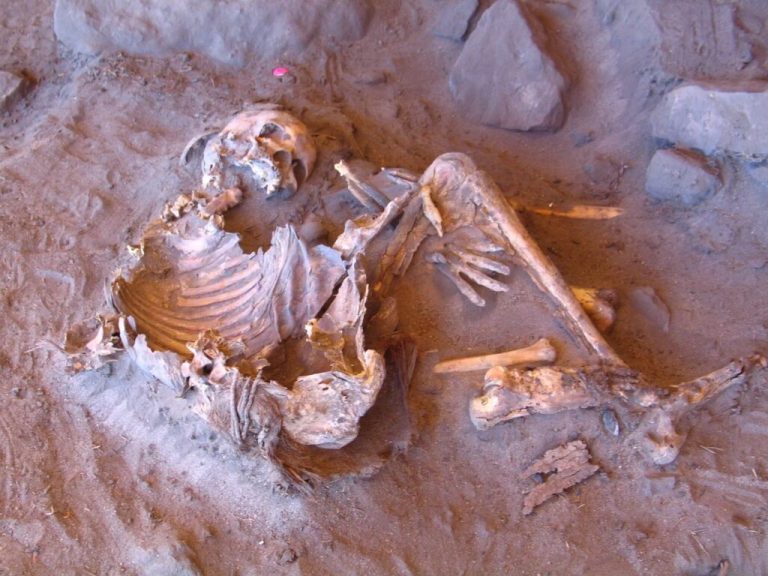Libya: Discovery of a Forgotten Human Ancestor
Editorial : Africa Eye
In the windswept heart of Libya’s Sahara, a groundbreaking discovery has emerged from the Takarkori rock shelter, where scientists from the Max Planck Institute unearthed 7,000-year-old mummified skeletons. These remains, remarkably preserved by the arid desert environment, offer a window into a forgotten chapter of human prehistory. What sets this discovery apart is the genetic analysis pointing to a previously unknown human ancestor. This lineage, distinct from those previously mapped in Africa, challenges long-standing assumptions about early human migration routes and raises compelling questions about how diverse populations once thrived in what is now one of the most inhospitable places on Earth.
The Takarkori find not only enriches our understanding of early human evolution, but also redefines the Sahara’s role as a dynamic corridor of migration rather than a barren divide. These ancestors, possibly adapted to a greener, more hospitable Sahara, lived during a period when the desert was lush and teeming with life. The genetic signatures extracted from the remains show traits not yet recorded in other ancient populations, hinting at a forgotten lineage that contributed to the rich genetic mosaic of modern humans. As researchers continue to decode the secrets buried beneath the sand, this discovery may well rewrite a part of our shared human story.
-

Mandela Day: UN Renews Call to Address Global Injustice and Inequality
Edited By: Safae FathiNelson Mandela’s legacy continues to inspire global action and remembrance each year on July 18, designated by... Chosen for you -

United States: Trump Signs New Bill to Intensify War on Fentanyl Trafficking
Edited By: Aminata Diallo On July 16, 2025, President Donald Trump signed into law the "Halt All Lethal Trafficking of Fentanyl... Chosen for you -

Príncipe Island: A Model for Sustainable Tourism in Africa
Edited By : Maher Al RifaiPríncipe Island positions itself as a rare model of sustainable tourism in Africa. This small... Chosen for you -

Iran-Algeria-Polisario: The Invisible Alliance Expanding Its Reach Across Europe
Editorial: Africa EyeIn “Tehran’s Octopus”, Emmanuel Razavi and Jean-Marie Montali unveil the inner workings of a strategic axis linking Tehran,... Chosen for you -

Texas Floods Claim Over 100 Lives, Including Dozens of Children at Summer Camp
Edited By: Tendai Zola The death toll from the catastrophic flash floods that struck central Texas on July 4th has surpassed... Society -

Australian Woman Convicted of Triple Murder After Serving Poisonous Mushroom Meal
Edited By: Tendai Zola A 50-year-old Australian woman has been found guilty of three counts of murder and one of attempted... Chosen for you

 Follow the latest news on WhatsApp
Follow the latest news on WhatsApp  Follow the latest news on Telegram
Follow the latest news on Telegram  Follow the latest news on Google News
Follow the latest news on Google News  Follow the latest news on Nabd
Follow the latest news on Nabd 


















